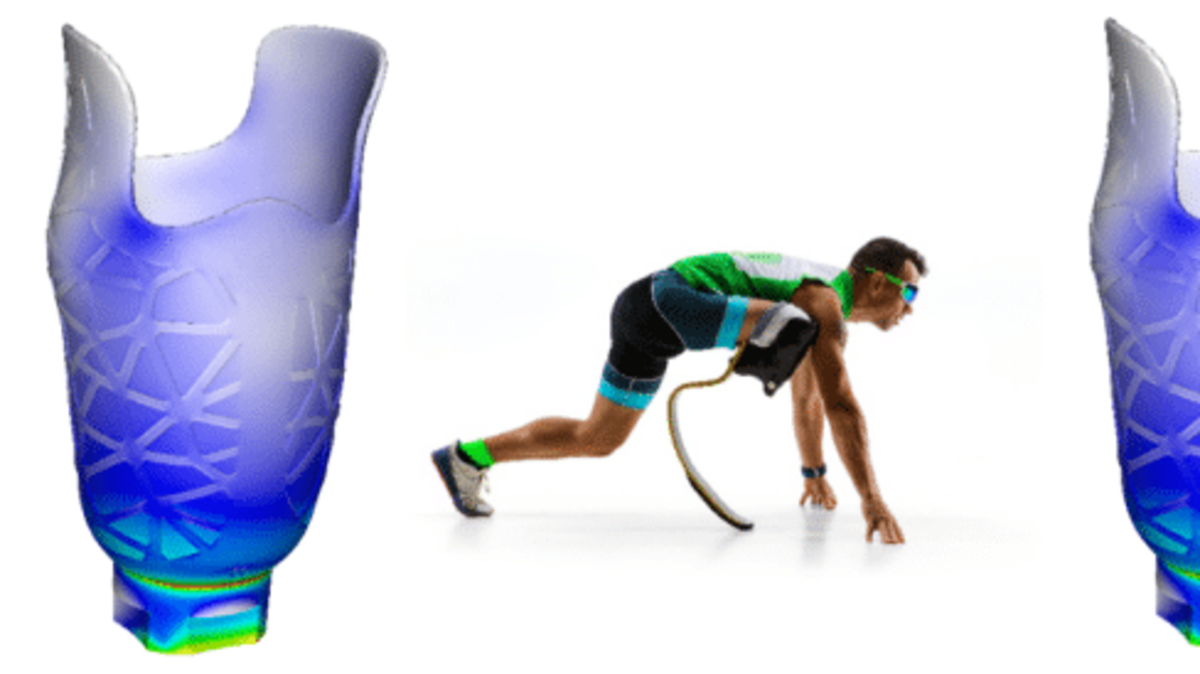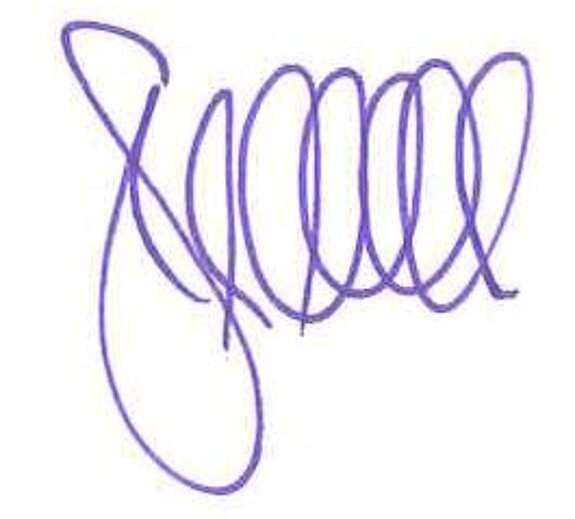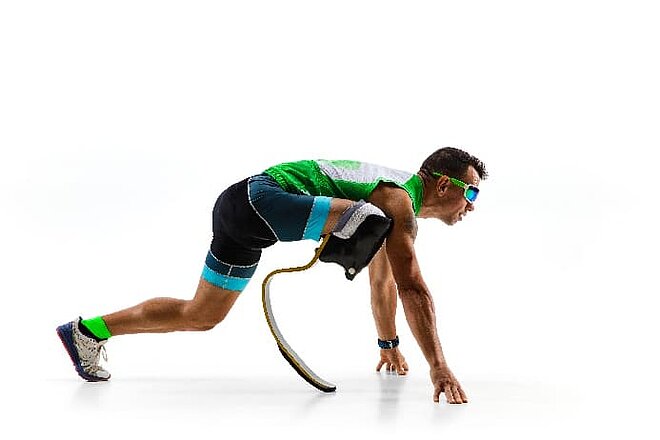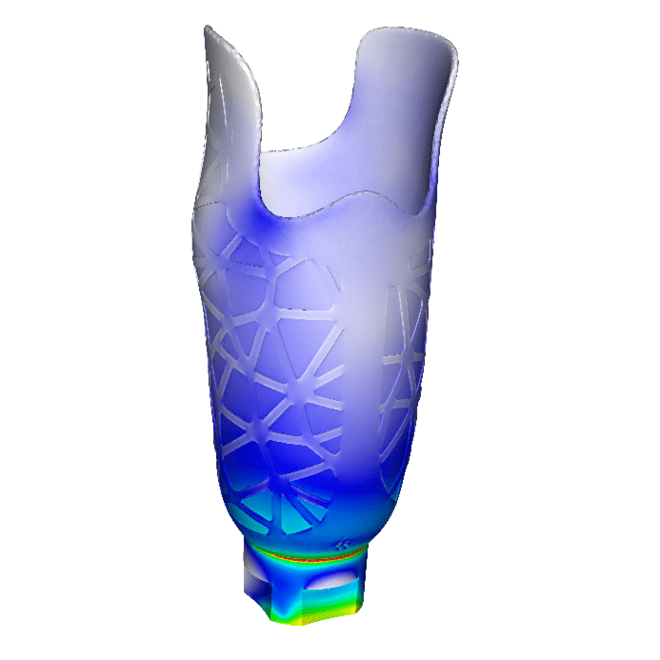Prostheses - simulation with hand and foot

A lost hand, a lost foot are in themselves a dilemma. From pirate movies, we still know the wooden leg or the hook that is more or less provisionally attached to the stump. Let's just think of Captain Ahab from Moby Dick. Granted, not a pirate movie, but the wooden leg is true.
Fortunately, medical technology offers better and better aids with modern prostheses. In 2012, Oskar Pistorius became the first bilateral leg amputee to compete in the regular Summer Olympics, finishing eighth in the 4 x 400 m relay with his teammates. But it doesn't have to be the high-tech prostheses of Pistorius.
Approximately 90% of prostheses in medical technology are still conventionally manufactured by hand by prosthetists. 3D printers are used for about 10%. The design is not based on simulation technologies, but purely geometric based on scanned data of the residual limb. Wall thicknesses and ribbing are designed by feel. If prostheses break, they are reinforced based on experience. This is expensive fun for health insurers, not to mention for the owner of the prosthesis, who is dependent on proper function.
Let's look at the whole thing from the point of view of a calculation engineer for simulation technologies. For a strength evaluation, one needs the load even during movement. The orthopedic technician's criterion is only the body weight. However, this alone cannot be sufficient, especially since there is no knowledge whatsoever about the load application.
It is clear that the prosthesis must hold, and that it should also be comfortable, which is already less gripping. How do you want to evaluate that? The contact pressure between the residual limb and the socket can be used here. And there you have a criterion that can be optimized with simulation technologies. The load, completely evenly distributed, is a theoretical optimum, but it can be used to evaluate it. Optimal here means that the voltage peaks are minimal.
This also shows that simulation technologies have not yet really arrived in medical technology. A lot is done by experiment and empiricism, whereas stress, fatigue strength and contact pressure are rather foreign words.
Perhaps this is because medical engineers think in mmHg. A very strange unit for a pressure or a tension, says at least my division manager Maik Brehm This unit has not been generally permissible since before he was born, namely since January 1, 1978.
What can we do better here?
In the (unfortunately not entirely cheap) extreme case, we can put an MRI-measured residual limb with bone, muscle and tissue into a 3D-printed socket and optimize it via simulations until the contact pressure reaches a minimum over several loading scenarios (standing, walking, jumping, bending, etc.).
With one of our research projects, ROAD3D, we are looking at the tolerable stresses of 3D printed components. In another research topic we are dealing with the simulation of the human body or parts of it. Optimal conditions therefore for the right know-how - also for medical technology, at Merkle & Partner.
In the affordable case, we investigate the strength via FEM methods, evaluate and reinforce critical zones, and design the prosthesis in an engineering manner.
This process can be largely automated and optimized. Not every prosthesis needs to be looked at either; a combination with AI methods is also possible. The cost savings from extended life alone should amortize the required effort for larger quantities. This is what makes simulation technologies so valuable - and not just for medical technology.
Have I aroused your curiosity?
We would be happy to inform you about the possibilities in modern simulation technology without obligation. Please send us an email with your contact details using our mailing form below. We will then get in touch with you as soon as possible.
Your Stefan Merkle

PS: We are also no strangers to the topic of exoskeletons

